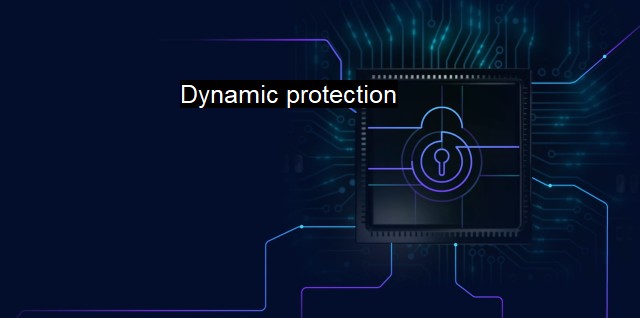What is Dynamic protection?
Dynamic Protection: An Innovative Approach to Boost Cybersecurity and Antivirus
Dynamic protection is an advanced antivirus and cybersecurity concept that is increasingly becoming essential due to the evolution of cyber threats. Incorporating intelligent ways to look for anomalies and abnormalities within systems and networks, dynamic protection goes beyond the conventional antivirus methods. It is an innovative approach towards cybersecurity that uses advanced algorithms and techniques to identify potential cyberattacks.At the core of dynamic protection is the use of heuristic analysis. Heuristic refers to a way of solving problems via discovering patterns and exploring different solutions. In antivirus programs, this often means using algorithms to detect new malware that hasn't appeared in virus databases yet. In traditional static antivirus protection, only known threats are perceived; on the other hand, dynamic solutions can identify unique, novel threats that haven't been classified yet.
Under this new form of protection, behavior-based analysis plays a significant role. The dynamic protection software constantly scrutinizes the normal operations within an IT infrastructure or a computer network. This software flags system behaviors that deviate from these documented routines— even if the anomalous activities do not match with any known signatures in online threat databases. unexpected remote access to the system, installation of a new program, encryption of crucial files without an authorized request, all these actions could be potential signs of a security breach.
Dynamic protection also incorporates the concept of machine learning. Through sophisticated learning algorithms, the system adapts to the ever-evolving threatscape. It learns, modifies, and increases its protective capabilities based on new cyber threats. AI capabilities incorporated within dynamic protection’s system allow it detect and mitigate both external and internal threats almost instantly, reducing response time and minimizing the potential malware or ransomware proliferation in the system.
Similarly, technologies like sandboxing, secure web gateways, intrusion prevention systems (IPS), and advanced threat protection (ATP) solutions belong under this dynamic umbrella. It also often takes a ‘Default Deny’ principle where the dynamic protection restricts any unknown and suspect files from executing unless they are completely vetted as safe and trusted.
Most dynamic security systems are also equipped with detection tools that perform thorough scans to search for weaknesses across hardware, software, and network components. If a vulnerability is detected, the system will not just patch the vulnerability but will also tremendously boost its understanding and orientation of threats that might exploit that vulnerability.
Dynamic protection takes the concept of antivirus and cybersecurity a step further. Its continuing growth and more in-depth incorporation into data security processes clearly show its importance in today's world where security grows more crucial every day. Especially in an era where IT systems are becoming increasingly more interconnected, this calls for extra layers of protection, where dynamic protection can play a significant role. Dynamic protection brings forth an era of data-protection cognizance, enhancing both online and offline security, promoting safety, privacy, and offering robust protection, which goes far beyond the conventional techniques. It is an uphill task, for sure, but a worthy one in these times of rapidly evolving cybersecurity threats.

Dynamic protection FAQs
What is dynamic protection in cybersecurity?
Dynamic protection refers to a type of antivirus software that is designed to provide real-time monitoring and protection against malware and other cybersecurity threats. It uses various techniques like behavior monitoring, machine learning, and AI to analyze the behavior of programs and files to detect and prevent malicious activityHow does dynamic protection differ from traditional antivirus software?
Traditional antivirus software relies on signatures or patterns to identify viruses and other malware. Dynamic protection, on the other hand, is designed to be more proactive by continuously monitoring system activity and detecting and preventing threats in real-time. It can also learn from previous attacks to improve its ability to detect and prevent future threats.Is dynamic protection better than traditional antivirus software?
Both dynamic protection and traditional antivirus software have their strengths and weaknesses. Dynamic protection is generally considered more effective in detecting and preventing new and unknown threats, while traditional antivirus software is better at identifying known threats. You may want to use both types of software in tandem for maximum protection.What are some examples of dynamic protection software?
Some examples of dynamic protection software include Norton Security, McAfee Endpoint Security, Kaspersky Security Cloud, and Bitdefender Total Security. These programs use a range of techniques to detect and prevent malware, including machine learning, behavioral analysis, and real-time scanning of files and programs.| | A | | | B | | | C | | | D | | | E | | | F | | | G | | | H | | | I | | | J | | | K | | | L | | | M | |
| | N | | | O | | | P | | | Q | | | R | | | S | | | T | | | U | | | V | | | W | | | X | | | Y | | | Z | |
| | 1 | | | 2 | | | 3 | | | 4 | | | 7 | | | 8 | | |||||||